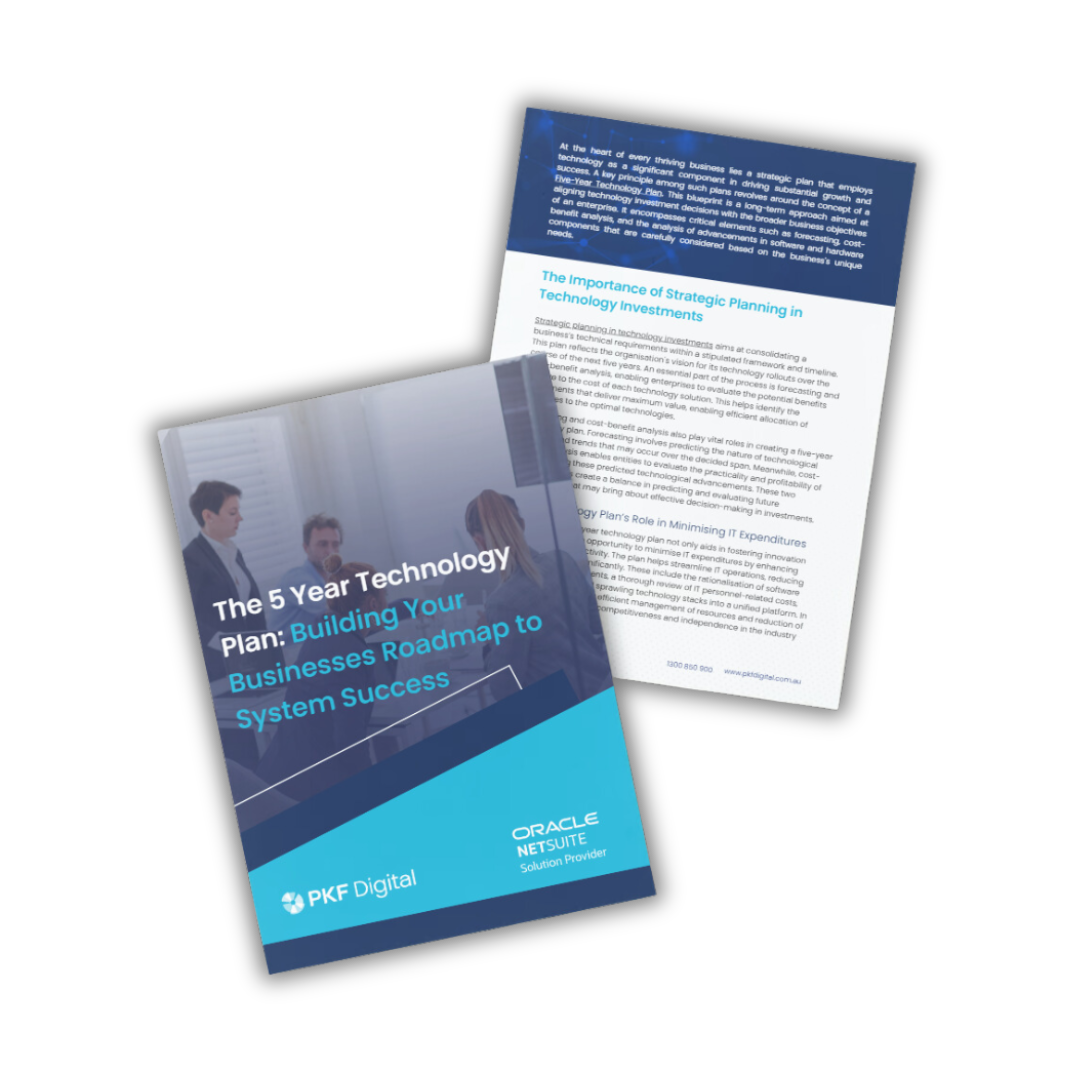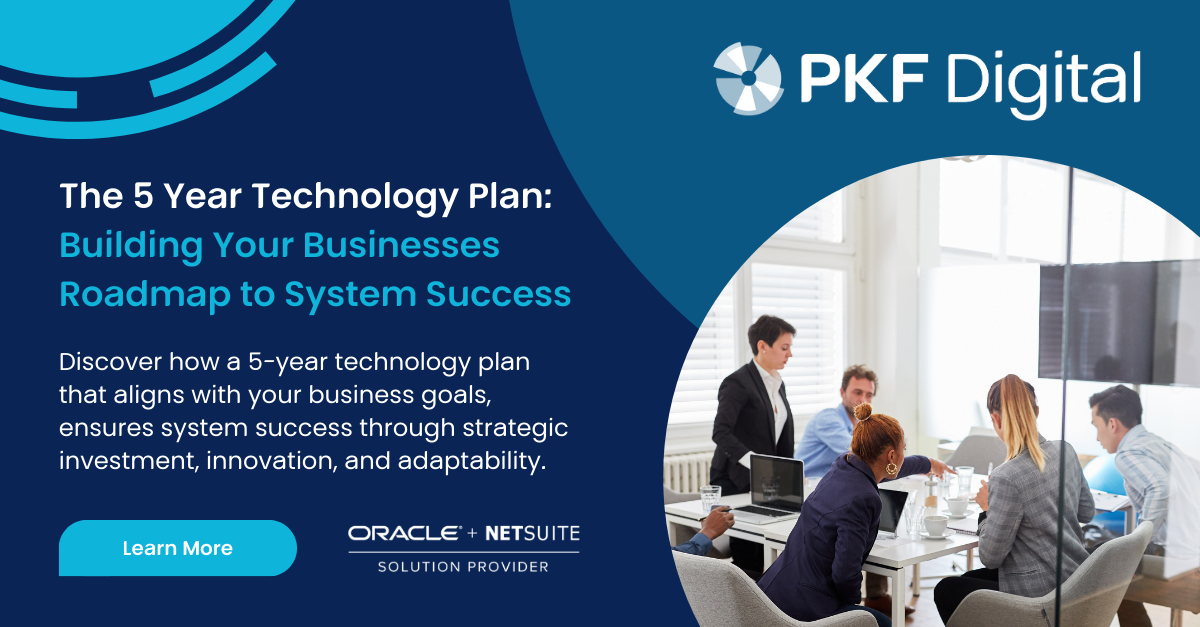At the heart of every thriving business lies a strategic plan that employs technology as a significant component in driving substantial growth and success. A key principle among such plans revolves around the concept of a Five-Year Technology Plan. This blueprint is a long-term approach aimed at aligning technology investment decisions with the broader business objectives of an enterprise. It encompasses critical elements such as forecasting, cost-benefit analysis, and the analysis of advancements in software and hardware components that are carefully considered based on the business's unique needs.
The Importance of Strategic Planning in Technology Investments
Strategic planning in technology investments aims at consolidating a business’s technical requirements within a stipulated framework and timeline. This plan reflects the organisation's vision for its technology rollouts over the course of the next five years. An essential part of the process is forecasting and cost-benefit analysis, enabling enterprises to evaluate the potential benefits relative to the cost of each technology solution. This helps identify the investments that deliver maximum value, enabling efficient allocation of resources to the optimal technologies.
Forecasting and cost-benefit analysis also play vital roles in creating a five-year technology plan. Forecasting involves predicting the nature of technological changes and trends that may occur over the decided span. Meanwhile, cost-benefit analysis enables entities to evaluate the practicality and profitability of implementing these predicted technological advancements. These two methodologies create a balance in predicting and evaluating future technologies that may bring about effective decision-making in investments.
Your Technology Plan’s Role in Minimising IT Expenditures
A well-crafted five-year technology plan not only aids in fostering innovation but also presents an opportunity to minimise IT expenditures by enhancing efficiency and productivity. The plan helps streamline IT operations, reducing redundant IT costs significantly. These include the rationalisation of software and hardware components, a thorough review of IT personnel-related costs, and the consolidation of sprawling technology stacks into a unified platform. In addition, it also allows for efficient management of resources and reduction of operational risk, fostering competitiveness and independence in the industry sector.
The 5 Pillars of a Technology Plan
The five pillars of Business Technology (BT) represent the foundational elements that support and drive the integration of technology into business strategies, enhancing efficiency, innovation, and competitive advantage. These pillars are crucial for any organisation aiming to thrive in the digital era by leveraging technology to meet its business objectives. Here's an overview of each pillar:
Infrastructure and Operations
This pillar encompasses the hardware, software, networks, and facilities that are essential for supporting an organisation's IT and business functions. Effective management of infrastructure and operations ensures reliable, secure, and efficient performance of IT services, which is critical for the day-to-day operations of a business.
Data Management and Analytics
In today's data-driven world, the ability to collect, store, manage, and analyse data is crucial. This pillar focuses on leveraging data to gain insights, support decision-making, and create value. It involves technologies and practices for data governance, quality, integration, and business intelligence, enabling organisations to make informed decisions and tailor their strategies based on data-driven insights.
Application Development and Integration
This pillar involves the design, development, deployment, and integration of applications that support business processes and user needs. It emphasises creating flexible, scalable applications that can adapt to changing business requirements, as well as integrating various applications and systems to ensure seamless operation across the organisation.

Short on time? Download this article to read later or share with a colleague.
The 5 Year Technology Plan: Building Your Businesses Roadmap to System Success
Security and Compliance
As cyber threats continue to evolve, the security and compliance pillar is increasingly important. This pillar focuses on protecting information assets from cyber threats, ensuring data privacy, and meeting regulatory requirements. It involves implementing robust cybersecurity measures, risk management practices, and compliance management to safeguard the organisation's data and technology infrastructure.
Financial Management
This pillar involves the planning, directing, monitoring, organising, and controlling of the financial resources within an organisation. In the context of Business Technology, financial management plays a pivotal role in evaluating the cost-effectiveness of technology investments, budgeting for IT projects, and ensuring a return on investment (ROI) that aligns with the company's financial objectives. It includes aspects such as:
Together, these five pillars of Business Technology provide a comprehensive framework for organisations to strategically leverage technology for business growth and operational excellence. They highlight the importance of a holistic approach to technology management, ensuring that IT initiatives are closely aligned with business goals and strategies.
How a Five-Year Tech Plan Can Drive Business Growth
Aside from the cost benefits, a strategic five-year technology plan can also be a significant driver of business growth. As an enterprise grows, it becomes more crucial to have coordinated technology plans that support the wider business strategy. The evolution of current technologies and the influx of new ones dictate the need for organisations to have a long-term technology plan to leverage these advancements effectively.
Innovation as a Vital Driver for Growth
One of the most influential factors driving business growth is the capacity to innovate. As technology continues to transform at an unprecedented rate, it lays the foundation for businesses to embrace these changes and translate them into innovative solutions. Integrating new technologies into operations can reshape existing business models, offering more value to customers and carving a niche in the competitive market.
Supporting Team Learning and Adaptation to Technological Changes
As businesses plan and adapt to technological changes, they engender a culture of continuous learning within the business. Investment in knowledge and skill-building encourages staff to accept and adapt to transformations, thereby creating a more prepared and resilient workforce. A well-articulated technology plan is instrumental in setting the tone for a pro-learning culture, creating employees well-equipped to drive growth.
Exploring the Potential of Systems Beyond ERP
Enterprise Resource Planning (ERP) systems have emerged as the bedrock of business operations, their integrated suite of applications facilitating a streamlined workflow while negating the need for disparate software modules. However, reliance solely on ERPs can have its own set of challenges. Since the 1990s, companies have implemented ERP systems to address integration issues. Despite this, these systems automate core activities without necessarily enhancing underlying business processes, often requiring other applications to coexist with ERPs.
Understanding the current role of ERP systems in businesses
Challenges in relying solely on ERP
Although the integration of ERPs with other systems like CRM and BI software facilitates seamless data sharing, offering real-time data access, and enhancing customer experiences, a considerable number of corporations continue to grapple with forming effective integration strategies.
The complexity and expense often linked to heavy customisation needed in ERP implementations may also pose a significant challenge. Tapping into the potential of enterprise application integration technologies could be a viable alternative. These allow for the selection and integration of the best modules from different ERP vendors to form one holistic system.
Final Thoughts
A Five-Year Technology Plan should be seen as a key strategic document that guides any technology investment for businesses aiming to harness technological advancements to fuel growth, innovation, and efficiency. This forward-looking blueprint not only ensures that technology investments are meticulously aligned with overarching business goals but also sets the stage for a transformative journey towards operational excellence and competitive differentiation. By carefully assessing current capabilities, defining strategic objectives, implementing tailored technology solutions, and embracing a culture of continuous evaluation and adaptation, organisations can navigate the complexities of digital transformation with confidence.
This strategic approach not only minimises IT expenditures through enhanced operational efficiency but also fosters a culture of innovation and continuous learning, empowering businesses to stay ahead in a competitive market. As businesses strive to leverage the full spectrum of technological possibilities - from cloud computing to beyond traditional ERP systems - they unlock new horizons for growth, efficiency, and resilience, ensuring their success in the digital age.


